
Kecacatan Saraf Tunjang: Pembedahan dan Penyelesaian
28 Sep, 2023
 Pasukan Healthtrip
Pasukan HealthtripSpinal cord deformity refers to abnormal curvatures or misalignments of the spine, which can lead to various health issues. These deformities may affect the spinal cord itself or the surrounding structures, such as the vertebrae, discs, and nerves.
Maintaining spinal cord health is crucial because the spine serves as the body's central support structure and houses the spinal cord, a vital component of the nervous system. Any deformity in the spine can potentially lead to pain, neurological problems, and a reduced quality of life.
Ubah Kecantikan Anda, Tingkatkan Keyakinan Anda
Cari kosmetik yang betul prosedur untuk keperluan anda.

Kami pakar dalam pelbagai jenis daripada prosedur kosmetik

Spinal cord deformity surgery is typically considered when non-surgical interventions like physical therapy and bracing are ineffective, and the deformity is causing severe pain, neurological deficits, or deformity progression. Indications for surgery vary depending on the type and severity of the deformity.
Types of Spinal Cord Deformities
A. Scoliosis
1. Scoliosis is a lateral (sideways) curvature of the spine, often in an "S" or "C" shape. It is classified based on the age of onset and its cause. Idiopathic scoliosis, which occurs in adolescents without an apparent cause, is the most common type.
2. The exact cause of idiopathic scoliosis is unknown, but genetic factors and abnormal bone growth may play a role. Other types of scoliosis can result from congenital abnormalities, neuromuscular disorders, or degenerative conditions.
Prosedur paling popular dalam
Laparoskopi Cystecto
Diskaun sehingga 80%.
90% Dinilai
Memuaskan
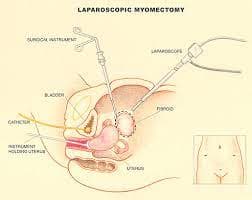
Miomektomi Laparosko
Diskaun sehingga 80%.
90% Dinilai
Memuaskan
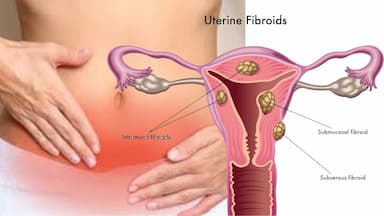
Lavh
Diskaun sehingga 80%.
90% Dinilai
Memuaskan
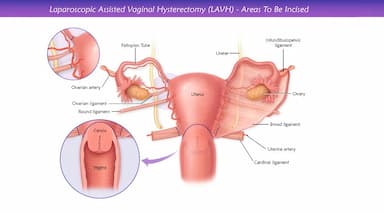
CATATAN
Diskaun sehingga 80%.
90% Dinilai
Memuaskan
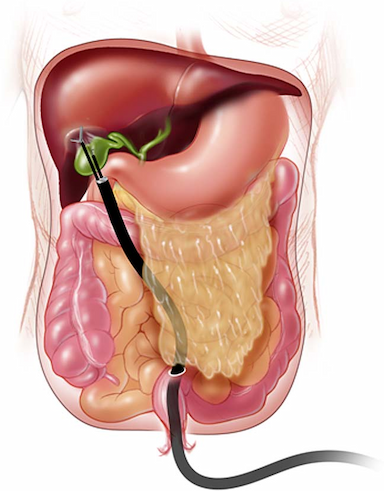
CABG
Diskaun sehingga 80%.
90% Dinilai
Memuaskan
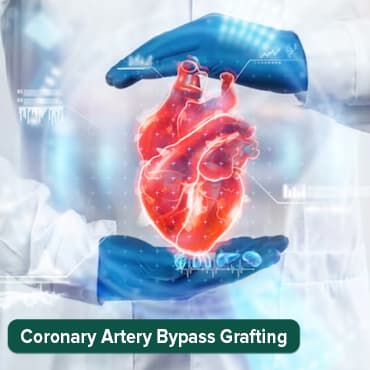
3. Symptoms can range from mild to severe and may include uneven shoulders or hips, a noticeable spinal curve, and back pain. Severe scoliosis can lead to breathing difficulties, heart problems, and reduced lung capacity if left untreated.
B. Kyphosis
1. Kyphosis is an exaggerated forward curvature of the spine, leading to a rounded or hunched back. It is classified into several types, including postural kyphosis, Scheuermann's kyphosis, and congenital kyphosis.
2. Postural kyphosis often results from poor posture, while Scheuermann's kyphosis is a structural abnormality of the vertebrae. Congenital kyphosis is present at birth due to vertebral defects.
3. Symptoms may include a visibly rounded upper back, stiffness, and occasional pain. Severe kyphosis can lead to breathing difficulties and compression fractures of the vertebrae.
C. Lordosis
1. Lordosis is an excessive inward curvature of the spine, most commonly seen in the lower back (lumbar) and neck (cervical) regions. It is categorized based on its location and cause.
2. Lordosis can result from poor posture, obesity, muscle imbalances, or structural abnormalities. In some cases, it may be associated with conditions like spondylolisthesis.
3. Symptoms of lordosis may include a swayed lower back, buttock prominence, and lower back pain. Severe lordosis can affect mobility and cause discomfort.
D. Other Deformities (e.g., Congenital, Neuromuscular)
There are various other spinal deformities, including congenital deformities that occur during fetal development and neuromuscular deformities associated with conditions like muscular dystrophy or cerebral palsy. These deformities often require specialized care and treatment approaches.
Spinal Deformity Surgery: A Step-by-Step Guide
1. Preoperative Evaluation and Planning
Prior to spinal surgery, comprehensive planning is essential. This begins with advanced diagnostic imaging techniques, including X-rays, MRI, and CT scans. These imaging tools are crucial for the detailed visualization of the spine's anatomy, allowing surgeons to map out the deformity with precision and devise a customized surgical plan. Health assessments follow, where the patient’s overall ability to withstand surgery is evaluated with cardiac and pulmonary tests, among others. These pre-surgical steps culminate in a detailed consultation with the surgeon, who will discuss potential risks, benefits, and the expected recovery trajectory.
2. Anesthesia and Patient Positioning
Spinal deformity surgeries require the patient to be under general anesthesia, which ensures they remain asleep and pain-free throughout the procedure. The correct positioning of the patient on the operating table is another critical element, as it facilitates the best surgical access to the targeted area of the spine. The patient’s position will vary depending on whether a posterior, anterior, or lateral surgical approach is selected.
3. Surgical Approaches
Surgeons may take different routes to access the spine based on the specific needs of the surgery:
- The posterior approach is often utilized for fusion surgeries and involves incisions made along the patient's back.
- The anterior approach requires incisions along the front of the body, primarily when addressing the thoracic or lumbar regions of the spine.
- The lateral approach involves side incisions and is typically reserved for less invasive procedures.
4. Surgical Techniques for Deformity Correction
The surgery may involve one or multiple techniques, depending on the deformity's severity and location:
1. Spinal Fusion
Spinal fusion is the most traditional and common approach to treating spinal deformities, particularly those that are severe and require stabilization. During this procedure, a bone graft is placed between the vertebrae, and metal rods, screws, or plates are used to hold the vertebrae together while the bone grafts heal and create a permanent fusion over time. This solidifies the relationship between the vertebrae, aiming to reduce pain and improve stability.
The surgery is quite invasive and the recovery period can be lengthy, often involving bracing and extensive physical therapy. Patients usually experience a significant reduction in spinal flexibility, which is a trade-off for stability and pain relief.
You may also like to read: Understanding the Backbone: A Guide to Spinal Fusion Surgery (healthtrip.com)
2. Osteotomy
Osteotomy for spinal deformity is a surgical procedure to correct angular deformities of the spine. Surgeons remove a portion of bone, which allows them to change the alignment of the spine. After bone removal, the spine can be realigned to a more normal curvature. Due to the delicate nature of this surgery, it is usually followed by the use of spinal instrumentation to maintain the correction.
This procedure is often reserved for patients with severe or rigid spinal deformities where simpler correction is not possible. Recovery from an osteotomy can be long and may be more painful in the short term than other spinal surgeries because of the significant changes made to the structure of the spine.
3. Vertebrectomy
A vertebrectomy is a drastic procedure where a whole vertebra is removed, typically to correct severe deformities or remove a tumor. After the vertebra is removed, the space is bridged with a bone graft, and hardware is used to stabilize the spine. The nature of the surgery requires precise surgical skill to prevent damage to the spinal cord and surrounding structures. Postoperative care is extensive, with a prolonged period of immobilization and rehabilitation to ensure proper healing and to maintain the corrected spinal alignment.
Due to the invasiveness of the procedure, vertebrectomy is often considered a last resort when less invasive measures are insufficient.
4. Disc Replacement
Disc replacement surgery offers an alternative to spinal fusion for treating certain types of disc pathology. Instead of fusing the vertebrae, the damaged disc is removed and replaced with an artificial disc to maintain motion at the level of the affected disc. The goal is to alleviate pain while preserving more natural spine movement. Patients who undergo disc replacement typically have a quicker recovery period compared to fusion, with an emphasis on returning to movement and daily activities sooner.
However, artificial disc replacement is not suitable for all types of spinal deformities and requires careful patient selection.
5. Vertebral Body Tethering (VBT)
Vertebral body tethering is a relatively new and less invasive surgical option for treating scoliosis, especially in young patients. This technique uses a flexible cord attached to screws placed along the spine to correct the curvature. As the patient grows, the tension on the cord modulates the growth on the convex side of the spine, allowing for a gradual correction of the deformity. The procedure aims to be a fusionless alternative, preserving spine mobility and reducing recovery time compared to traditional spinal fusion.
VBT is particularly suited for skeletally immature patients with progressive scoliosis and requires ongoing monitoring as the child grows.
5. Closing the Incision
Post-correction, the surgical site is meticulously closed, often using sutures or staples. Surgeons may also place a drain to prevent fluid accumulation, promoting a smoother healing process.
6. Postoperative Care
Recovery begins with hospitalization, where pain management and the monitoring of any potential complications are paramount. Early mobility exercises are encouraged to aid in recovery. Following discharge, physical therapy is vital for strengthening and improving flexibility. Regular follow-ups, including imaging tests, help to ensure that the healing process is on track.
Patient-Centered Recovery: Returning to Life with Confidence
The recovery timeline varies, with a full return to activities sometimes taking over a year. The end goal is always to provide patients with a stable and well-aligned spine, significantly improving their quality of life.
Complications and Risks for Spinal cord deformity surgery
Now, let's talk about some of the potential complications and risks associated with spinal cord deformity surgery:
A. Infection: Infections at the surgical site can occur, which may require antibiotics or, in severe cases, additional surgery to address.
B. Bleeding: Surgical procedures always carry the risk of bleeding, which might necessitate blood transfusions or further surgical intervention
C. Nerve Injury: Despite careful monitoring, there's a chance of nerve injury during surgery, which could lead to sensory or motor deficits.
D. Implant Failure :The hardware used to stabilize the spine, such as screws or rods, could fail or break over time, requiring revision surgery.
E. Failure to Correct Deformity: In some cases, surgery may not fully correct the deformity, leading to residual issues that may require additional treatment.
F. Blood Clots : Blood clots can form in the legs or lungs, posing a risk, especially during the recovery period when mobility is limited.
G. Anesthesia-Related Complications : Anesthesia carries its own set of potential complications, including adverse reactions or complications related to underlying medical conditions.
Rehabilitation and Long-term Management
After surgery, a crucial phase begins, focused on your recovery and long-term well-being:
A. Physical Therapy and Rehabilitation: Physical therapy helps you regain strength and mobility, and it's a vital part of the recovery process.
B. Follow-up Imaging and Monitoring : Regular follow-up appointments with your healthcare team will include imaging to ensure your spine is healing correctly and that the deformity remains corrected.
C. Lifestyle Modifications: Depending on your case, you may need to make lifestyle adjustments, like avoiding heavy lifting or high-impact activities, to protect your spine.
D. Support Groups and Psychological Support : Joining support groups and seeking psychological support can help you cope with the emotional and psychological aspects of living with a spinal deformity.
Prognosis
Finally, let's consider what you can expect in terms of your prognosis and outcomes:
A. Improvement in Deformity and Symptoms:The primary goal of surgery is to correct the deformity and alleviate associated symptoms, which often leads to significant improvement in your condition.
B. Potential Limitations and Residual Effects: While surgery can be highly effective, some patients may experience limitations or residual effects, particularly if the deformity was severe or longstanding.
C. Long-Term Quality of Life : With proper care, many individuals go on to enjoy a good quality of life after spinal cord deformity surgery. Regular follow-ups and a commitment to rehabilitation are key to long-term success.
How can we help with the treatment?
If you're on the lookout for treatment in India, let Healthtrip be your compass. We will serve as your guide throughout your medical treatment. We'll be by your side, in person, even before your medical journey commences. The following will be provided to you:
1. Access to renowned doctors from 35+ countries.
2. Partnership with 335+ top hospitals,, including Fortis and Medanta.
3. Comprehensive treatments, including Neuro, Cardiac, Transplants, Aesthetics, and Wellness.
4. Post-treatment care and $1/minute Teleconsultations.
5. Trusted by 44,000+ patients for appointments, travel, visa, and forex assistance.
6. Access to top treatments and packages like Angiograms.
7. Insights from genuine patient experiences and testimonials.
8. Stay updated with our medical blog.
9. 24/7 support for hospital formalities, travel arrangements, and emergencies.
10 Pre-scheduled specialist appointments and prompt emergency assistance.
In summary, spinal cord deformity surgery offers the potential for significant improvements in both physical health and overall quality of life. Seeking early medical advice and personalized treatment plans are key steps in the journey toward a healthier and more fulfilling life.
Rawatan Kesihatan
Beri diri anda masa untuk berehat
Harga Terendah Dijamin!

Harga Terendah Dijamin!



